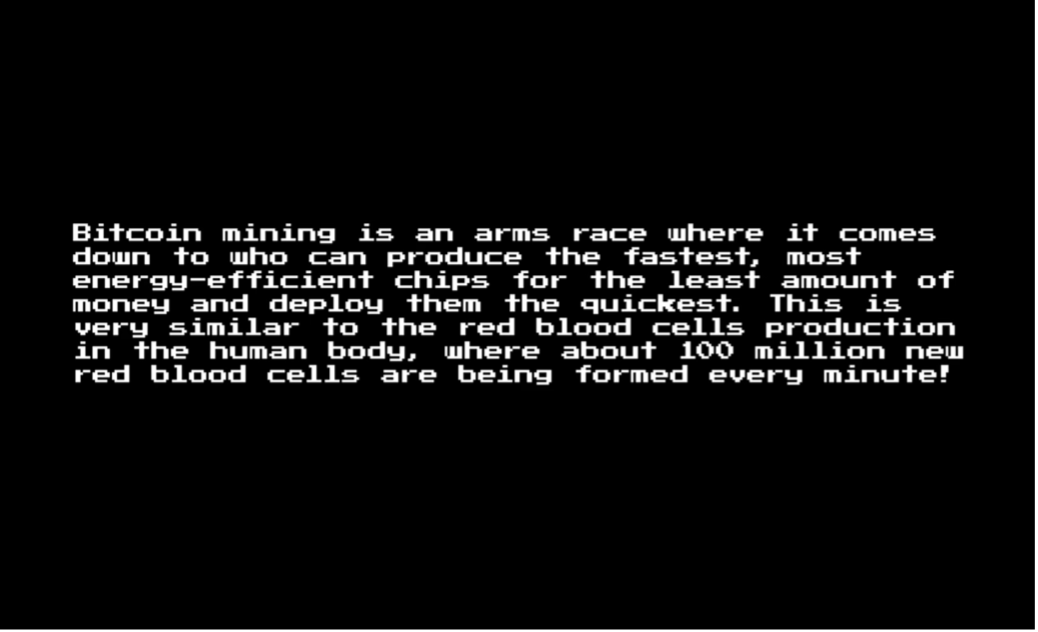Mining for Virtual Gold
Orla Mc Hardy wonders how virtual extractivism directly originates from the imagery and practices of mining.

Author: Orla Mc Hardy
Ideas of extraction in the popular imagination often centre around the imagery and practices of mining. The practice of Gold-Farming is a perfect example. This is where a real economy is extracted from a virtual world.
In this practice, most widespread in China, hundreds of thousands of young migrants work at playing computer games in order to extract points or in-game currency for sale to other players. Workers spend long days in warehouses and workshops in front of computers and under the control of their bosses, gathering tokens to help players gain levels in the online roleplaying game, World of Warcraft. For the players the monotony of completing the repeated tasks in the game environment is similar to working in a factory except that this is a virtual world. The players “dedicate time to what are usually multi-player games, a time that players in other latitudes, especially in the United States, do not have, but for which they are willing to pay.” This practice makes visible the way that some people’s time is required in order that other people’s time can be felt to be fast or to not really be felt at all.
The trade in virtual assets is very real and happens outside the control of the games’ makers. Even though there are strict laws against the practice, there are always players willing to play to sell with millions of gamers around the world prepared to pay real money for such online credits. The sheer volume of the demand makes it hard to regulate. This lack of regulations has meant that even prisoners, detained in re-education-through-labour camps can be exploited in this virtual world for profit.

While researching Gold Farming, I learned of Ubermorgen, a Swiss-Austrian-American artist duo created in 1995 by lizvlx and Hans Bernhard. Their 2005/2006 work, Chinese Gold, was partly fictive investigation of the process of generating online currency within the online game World of Warcraft, through the use of found video and machinima. There exists on-line only traces of this work. At time it was made, it existed as a documentary investigating the gaming workshops in China, a website, as well as a photos series featuring stills taken from video documention sessions in different underground playing arcade locations; in Belgrade, as well as in China, in one of the hundreds of workshops where young Chinese play World of Warcraft for money.
A more recent work from 2015, Chinese Coin (Red Blood), works as a deft companion piece to the topics raised in this essay. The HD video piece documenting how Red Coin mining has recently made the People’s Republic of China. According to the makers, the work was “shot in a Chinese Bitcoin generating factory”, it “enters a space generally unseen and about which very little is known, and explores both the unpredictability and the subversive power of crypto-currencies.” [1] This unpredictability is key, highlighting as it does the evasive yet insidious reach of these expanded mining/extractive practices across many facets of society both real and virtual.

According to Sandro Mezzadra and Bret Neilson (2017), such popular phenomena of extractivism directly originate from the imagery and practices of mining. Not only they complicate this narrative by clearly laying out the less obvious yet all pervasive modes of contemporary extraction, but also tease out the connections between geological mining, the mining of slave labour, data mining, bioninformatic mining, the extractive turn in agriculture, all in the context of late capitalism and “the shifting geographies” of neoliberal financial and social structures.If we take mining as a metaphor and apply it to the “spreadsheets of contemporary capital,” [2] they show us examples of mining in virtual spaces such as bitcoin mining, where mining refers to the processes of data encryption, transaction and verification which are part and parcel of bitcoin production. Understood in this context, gold mining is another virtual manifestation of the very real and material practices of mining. The fact that the bodily labour implicit to this form of mining is masked by digitals avatars, does not make it any the less real.
Notes
1. Mezzadra, Sandro, and Brett Neilson. “On the multiple frontiers of extraction: excavating contemporary capitalism.” Cultural Studies 31, no. 2-3 (2017): 185-204.
2. Ibid, 179
3. Ubermorgen “Red Coin (Chinese Blood),” Vimeo, accessed, Oct 31, 2021, https://vimeo.com/155431356
4. Part of the Net.Art avant-garde of the 1990s and 2000s digital actionism, their main body of work is a subversive mix of internet art/net.art, installation, video art, photography, software art, performance, media hacking, using the convergence of digital media to produce and publish online and offline. Many of their projects have addressed the intersections of Internet culture, money, and branding
5. Lisa Baraitser, Enduring Time, London and New York: Bloomsbury, 2017.
6. Davis, Rowenna. “Welcome to the new gold mines” The Guardian, March 5, 2009. https://www.theguardian.com/technology/2009/mar/05/virtual-world-china
7. “Chinese Gold,” Ubermorgan, Google, last accessed November 11, 2021, https: //www.ubermorgen.com/Chinese_Gold/
8. Gilmore, Anthony. “Gold farming: a real economy in the virtual world” The Guardian, March 5, 2009. https://www.theguardian.com/technology/2009/mar/05/virtual-world-china
9. Vincent, Danny. “China used prisoners in lucrative internet gaming work” The Guardian, May 25, 2011. https://www.theguardian.com/technology/2009/mar/05/virtual-world-china
10. Thorez, Julie Boschat. “ Casestudy: UBERMORGEN – Chinese Gold” 2017, https://www.li-ma.nl/lima/article/casestudy-ubermorgen-chinese-gold-julie-boschat-thorez
Ecological Thinking
This is the course blog for K-JI-11-23A – Ecological Thinking. In 2023-24, we explore “Vertical Ecologies” by visual arts, film and performance. The course is co-organized by Giovanna Esposito Yussif and Samir Bhowmik. Previously, in 2022-23, we organized a year-long collaborative research studio with Aarhus University, DK, Research Pavilion 2023 and Helsinki Biennial 2023 on the themes of environmental data, sensing and contamination.
Header image credit: Abelardo Gil-Fournier and Jussi Parikka / Seed, Image, Ground (2020)- With permission from the authors.
Latest posts
-
Ecocidal Development and Atmospheric Warfare - Guest Lecture by David Muñoz Alcántara, 18.3.
-
"Schizophrenic relationship with nature" - Guest Lecture by Matti Aikio, 12.2.
Follow blog